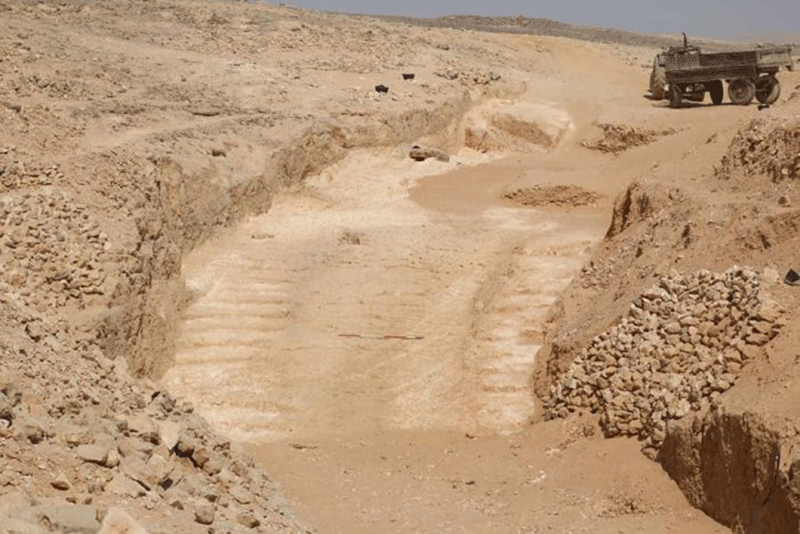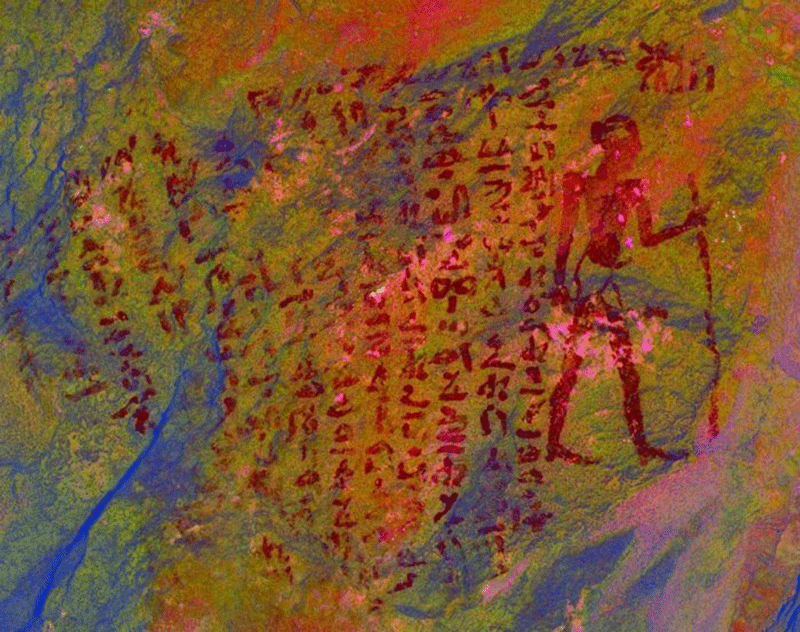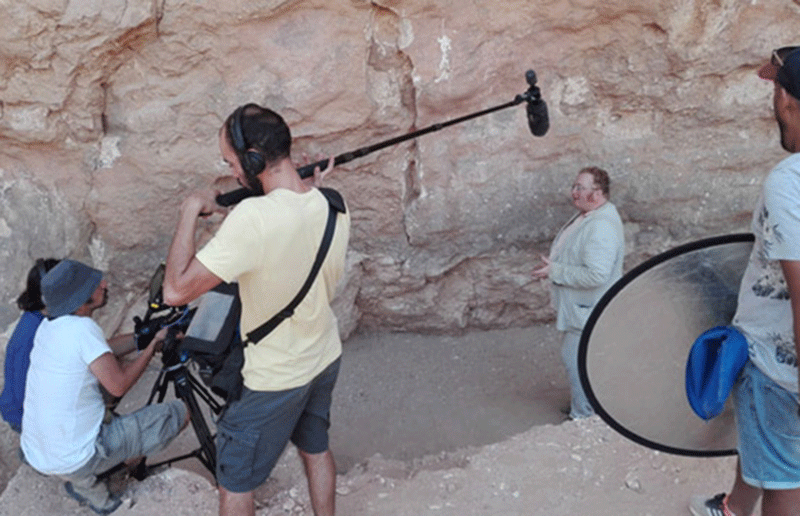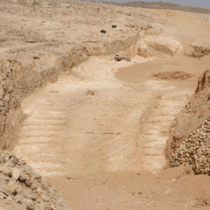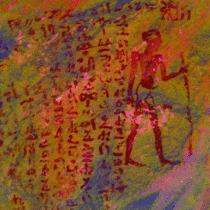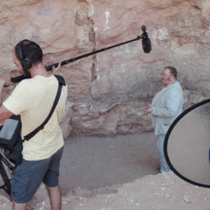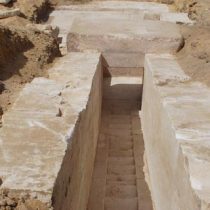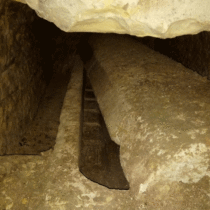Archaeologists in Egypt have discovered a ramp for transporting stone blocks used to build the pyramids. The way these massive blocks were transported from the quarries to the building sites is a question that has long puzzled researchers.
The discovery was made at the site of Hatnub, an ancient alabaster quarry in the Eastern Desert. The team working at the site, with archaeologists from the French Institute for Oriental Archaeology in Cairo and from the Department of Archaeology, Classics and Egyptology at the University of Liverpool in England discovered the remains of a ramp which was used to transport huge blocks.
According to Dr Roland Enmarch from the University of Liverpool the ramp is extremely well preserved and is leading out of the quarry. Along the sides of the ancient ramp there are two staircases lined with postholes. Ropes were probably tied on these to drag the huge stone blocks. Researchers believe the traces of post holes will shed light to the details of the ancient technologies of stone haulage and extraction.
The 4,500-year-old ramp dates to the reign of Khufu, who built the Great Pyramid at Giza, so archaeologists hope that the ramp will also provide valuable information on the logistics and technologies used in constructing the Pyramid.
According to Yannis Gourdon, from the French Institute for Oriental Archaeology in Cairo a sled was used to carry a stone block, acting like a pulley and helping workers carry them on very steep slopes of 20 percent or more.
The joint mission will further study all of these features of the site aiming to produce a comprehensive picture of how quarrying took place in Ancient Egypt.
Mustafa Waziri, Secretary General of the Egyptian Ministry of Antiquities highlighted the importance of the discovery, since it is the first evidence of how massive blocks were lifted and moved from quarries.
Excavations also yielded other items except the ramp. The team discovered at least 100 inscriptions referring to Pharaohs’ visits to the quarries and stone dwellings for the workers of the quarry. Four stone stelae were also discovered, one of them depicting a person standing.
